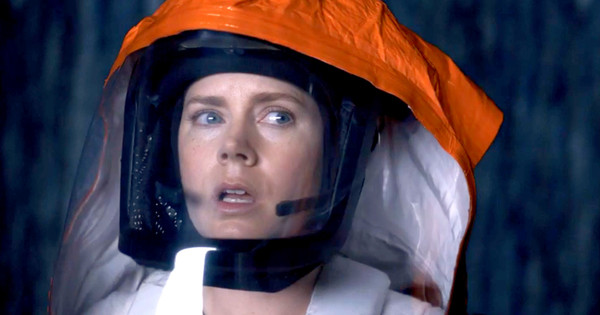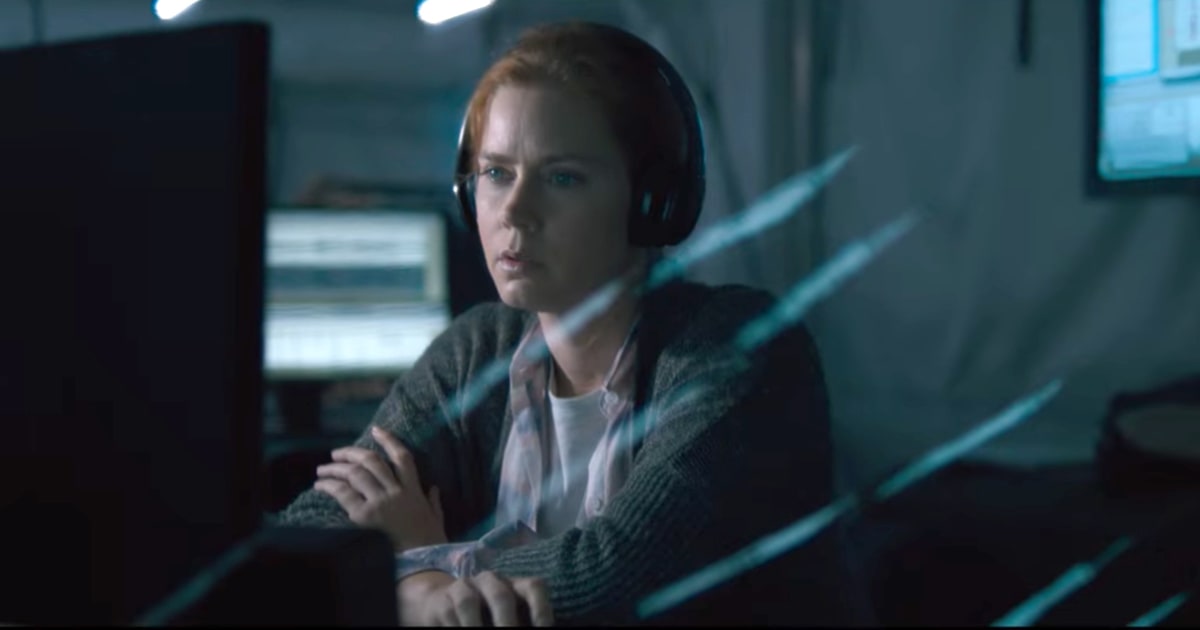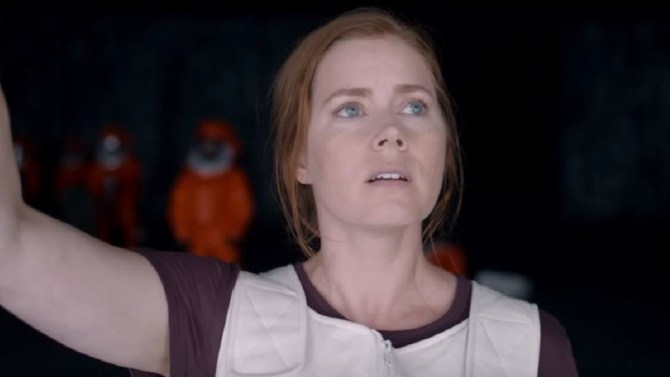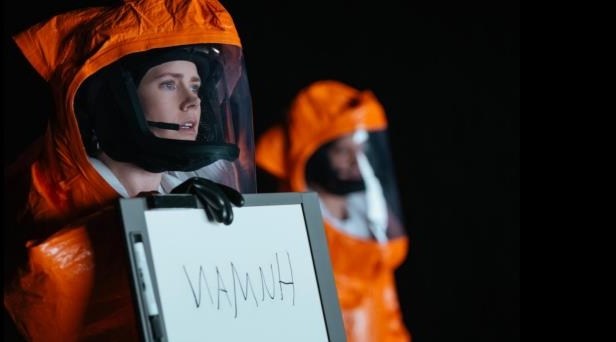
Accomplished Québécois filmmaker Denis Villeneuve’s sci-fi follow-up to 2015’s Sicario, Arrival, may well be my favorite film of 2016. It’s an ecstatic and otherworldly experience, extraordinarily romantic, deeply moving, and filled with buoyancy, and wonder.
Arrival is also something of a weepie––though importantly it earns its tears in an honest manner, there’s no emotional blackmail here––and, balanced by a bold narrative, visual versification, and a brilliant turn from Amy Adams, Villeneuve’s film functions best, perhaps, as a bridge between Stanley Kubrick’s 2001: A Space Odyssey, Terrence Malick’s Tree of Life and the profound yet fable-like speculative writings of Ray Bradbury, Philip K. Dick and Ursula Le Guin.
Villeneuve proves once again that he can master any genre––as seen in recent works such as the psychological mindfuck Enemy (2013), the detective procedural Prisoners (2013), and the cartel crime epic Sicario (2015)––and the artistry on hand here is wondrous, with sequences of such aching, ingenious elegance.
The following list will briefly touch upon the transformative and spellbinding elements that make Arrival a richly rewarding pièce de résistance, and one of the most moving affecting and eloquent films of 2016.
10. Arrival is respectful of its source material and yet is uniquely its own

Eric Heisserer’s script for Arrival is based faithfully on “Story of Your Life”, a 1999 piece of award-winning short fiction by Ted Chiang (author of 1991’s Hugo-winning novella “Tower of Babylon”).
Thus Arrival begins in an agile procedural vein as we meet linguistics professor Louise Banks (Amy Adams, brilliant) who reluctantly heads an elite team of investigators after a dozen massive, monolith-like spaceships touchdown in seemingly random locals around the earth.
As panic spreads amongst the populace and nations tremble on the brink of all-out earthly war, Louise’s team hustle to find a way to communicate with the extraterrestrials. The earlier procedural modus gives way to mysticism and flat-out spectacle as Louise unravels their alien language, risking her life and perhaps all human life.
The results, while skillfully subdued, restrained, and ruminative is rich and colossal with emotion and imagination. We’ll go a little deeper further down this list but Arrival presents a relevant reminder to exercise empathy over apprehension, love over alarm, and progress over stasis. No offense, but this isn’t Star Wars.
9. Villeneuve understands sci-fi and this bodes well for ‘Blade Runner 2049’

Before diving into the nitty-gritty of Arrival it’s worth it to placate the diehards, butterup the fanboy contingent and let the sci-fi aficionados know that Villeneuve is a virtuoso, full stop. With many potentially “butthurt” speculators online anticipating a Blade Runner follow-up to be a faux pas of epic proportions it’s easy to view Arrival, a glossy, grand-scale science fiction chronicle to be something of a preliminary test-run. And if that’s the case then Arrival passes the first round with flying colors.
While Ridley Scott’s adaptation of Philip K. Dick’s Blade Runner from 1982 is something of a sacred cow, and certainly the best PKD adaptation to date––and that’s no small feat––Villeneuve displays ample evidence of being every bit the clever visual formalist as Scott.
In fact, Villeneuve easily matches and perhaps surpasses Spielberg’s populist successes like Close Encounters of the Third Kind (1977) to bask in the warmth of such celebrated antecedents as the aforementioned Kubrick, and Andrei Tarkovsky (think Solaris and Stalker).
And as far as the contemporary genre cannon, Arrival takes a place in line with Shane Carruth’s Upstream Color (2013), Jonathan Glazer’s Under the Skin (2013), Alex Garland’s Ex Machina (2015), Christopher Nolan’s soapy Interstellar (2014) and Scott’s more mainstream marvel The Martian (2015).
8. No spoilers but the ending of Arrival is a stunner

Arrival joyfully affords some dazzling twists that not only will make the likes of Christopher Nolan and M. Night Shyamalan reevaluate their vocation but will send audiences buzzing and discussing after the end credits scroll. This is the type of film that delights at the cinema and then continues into cafes and living rooms long afterwards.
Rather than ruin anything for those who’ve yet to see Arrival let’s just say that there is a dazzling detour in a temporal sense that brings the film to a risky conclusion that’s both moving––I’m unashamed of the heartening tears I wept––and unabashedly bold. This is cinema without a safety net and only the adventurous need apply.
7. Villeneuve expertly offers a rewarding slow reveal

While Arrival builds up considerable momentum and offers up numerous moments of awe and astonishment, it’s sometimes the teasing buildup and dramatic flourish that yields the most fist-pumping of rewards, surprise reveals and gobsmacking eye-openers.
At times it would appear that Villeneuve has taken a page from the Ishirō Honda playbook. Honda, a frequent and lifelong collaborator of Akira Kurosawa, is best remembered for his kaiju and tokusatsu genre films, such as Gojira. These films, while decidedly unsubtle show remarkable restraint from Honda as he takes his precious time before revealing Godzilla, using every opportunity to ratchet the suspense and build momentum.
This is the tack used before we glimpse the alien spaceship Louise will come to know so well in the mists of Montana. It’s a risk that gets great results and heightens the hurry most effectively.
6. The aliens and their language are rich and insightful

I won’t go so far as to say that Arrival is a flawless film––there’s something of a cosmically convenient derived form of deus ex machina in the third act that’s tied to the alien language––but I will certainly admonish and celebrate how magnificently rendered the alien heptapods are and how wondrous their logogram language is.
Our first glimpses of the aliens run congruent to Louise’s as well. She’s not the first human to have seen them at this point, and they’ve already been given the moniker “heptapods” in reference to the seven tendril-like trunks that dangle from their towering bodies.
There is something Cthulhu-like in their visage, but also something elephant-like in their ruminative nature and deeply intuitive perception. The texture of their skin and their lumbering movements as well as their atavistic way of thinking draws an insightful parallel to both the earthly pachyderm and cetacea marine mammals, too.
As Louise and her theoretical physicist partner Ian Donnelly (Jeremy Renner) begin to communicate with the heptapods via a dry-erase board––the heptapods use ink from their tendrils sprayed upon a glass-like barrier––they eventually begin to articulate what they can via logograms (words represented by symbols).
This pictorial language that the heptapods use circular images, at first almost like ring-shaped coffee stains until the patterns and nuances emerge. The annular shapes of the alien language also offers up evidence as to how the heptapods perceive time, which brings us to our next point of interest.